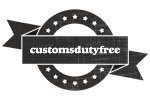Swaziland is a landlocked country located in Southern Africa. It is bordered to the north, west, and south by South Africa and to the east by Mozambique. Swaziland has a varied geography from mountains along the Mozambique border to savannas and rainforests. The government system is a monarchy; the chief of state is the king, and the head of government is the prime minister. Swaziland has a traditional economyThe management of money, currency and trade of a nation. The... in which a majority of the population engages in subsistence agriculture. Swaziland is a member of the Common MarketThe commercial activity of buying and selling goods and serv... for Eastern and Southern Africa (COMESA) and the Southern African Development Community (SADC).
Surrounded by South Africa, except for a short border with Mozambique, Swaziland depends on South Africa for 60% of its exports and for more than 90% of its imports. Swaziland’s currency is pegged to the South African rand, effectively relinquishing Swaziland’s monetary policy to South Africa. The government is heavily dependent on customs duties from the Southern African Customs UnionA group of nations which have agreed to promote free trade, ... (SACU), and worker remittances from South Africa supplement domestically earned income. Swaziland’s GDP per capitaFor each person in the population. Per head. An expression o... makes it a lower middle income country, but its income distribution is highly skewed, with an estimated 20% of the population controlling 80% of the nation’s wealth. As of 2014, more than one-quarter of the adult population was infected by HIV/AIDS; Swaziland has the world’s highest HIV prevalence rate.
Subsistence agriculture employs approximately 70% of the population. The manufacturing sector diversified in the 1980s and 1990s, but manufacturing has grown little in the last decade. Sugar and wood pulp had been major foreign exchange earners until the wood pulp producer closed in January 2010, and sugar is now the main export earner. Mining has declined in importance in recent years. Coal, gold, diamond, and quarry stone mines are small scale, and the only iron ore mine closed in 2014. With an estimated 40% unemploymentAn economic situation in which jobless people, often those w... rate, Swaziland’s need to increase the number and size of small and medium enterprises and to attract foreign direct investmentMoney or capital that is invested in a business or in an acc... is acute. Overgrazing, soil depletion, drought, and floods are persistent problems. On 1 January 2015, Swaziland lost its eligibility for benefits under the US African Growth and Opportunity Act, resulting in the loss of thousands of jobs.
Important Details
- Country ISO3 : SWZ
- Country Code : 748
- Income Group : Lower middle income
- Lending Category : IBRD
- Region : Sub-Saharan Africa
- Currency Unit: Swaziland lilangeni
- WTO Member : Yes
- TradeThe buying and selling or exchange of goods and services. Th... organisations : WTO, SADC, SACU
- world rank : 94
- Regional Ranking : 11th in Sub-Saharan Africa

